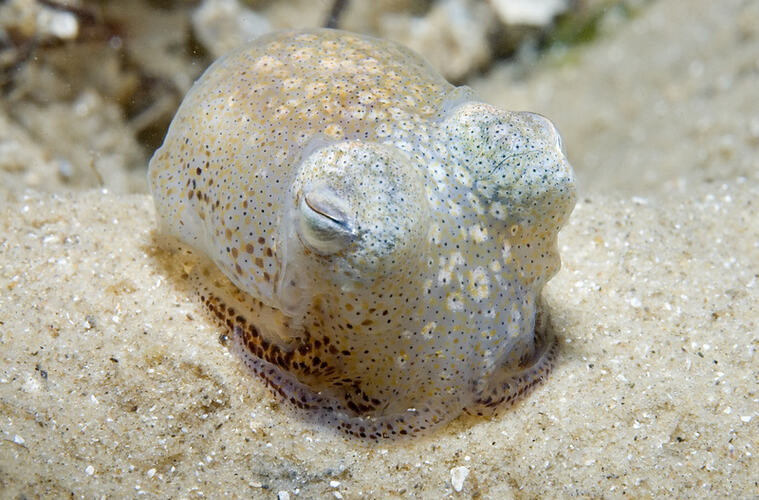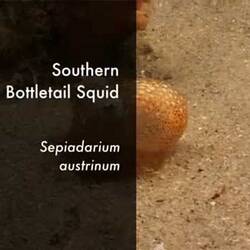General Description
Tiny round, bottom living squid. Small pair of kidney-shaped fins on sides of body encompassing the rear third of the body. Orange or yellow in colour, comprised of large pale spots (leucophores) scattered over the body, head and arms. Underside of the head and body covered in regular small rounded glands that produce slime (mucous). Mantle length to 3 cm.
Biology
These small squids hide during the day by wriggling into the sand and using two arms to rake sand grains over their heads and bodies. At night, they emerge to hunt for small crustaceans, particularly isopods. If attacked they squirt a large amount of slime from glands under their body. The slime appears to contain chemicals that deter or scare off predators. Its chemical composition is still unknown. Females lay eggs in clumps, glued together and covered in sand grains, usually at the bases of seaweeds or seagrasses.
Distribution
Southern Australia.
Habitat
Sand and mud habitats in coastal waters, often near seagrass beds to a depth of at least 65 m.
More Information
-
Animal Type
-
Animal SubType
-
Brief Id
10 arms and tentacles, kidney-shaped fins on rear third of body, pale spots.
-
Colours
Orange, Yellow, Cream
-
Maximum Size
3 cm
-
Habitats
-
Diet
Carnivore
-
Hazards
Potential to bite, especially if handled. Venom status unknown.
-
Endemicity
-
Commercial
No
-
Conservation Statuses
CITES: Not listed, FFG Threatened List: Not listed, DSE Advisory List: Not listed, IUCN Red List: Data Deficient
-
Depths
Shallow (1-30 m), Deep ( > 30 m)
-
Water Column Locations
On or near seafloor
-
Taxon Name
-
Scientific Author
Berry, 1921
-
Common Name
Southern Bottletail Squid
-
Other Names
Cuttlefish
-
Phylum
-
Class
-
Subclass
-
Order
-
Family
-
Genus
-
Species Name
austrinum



